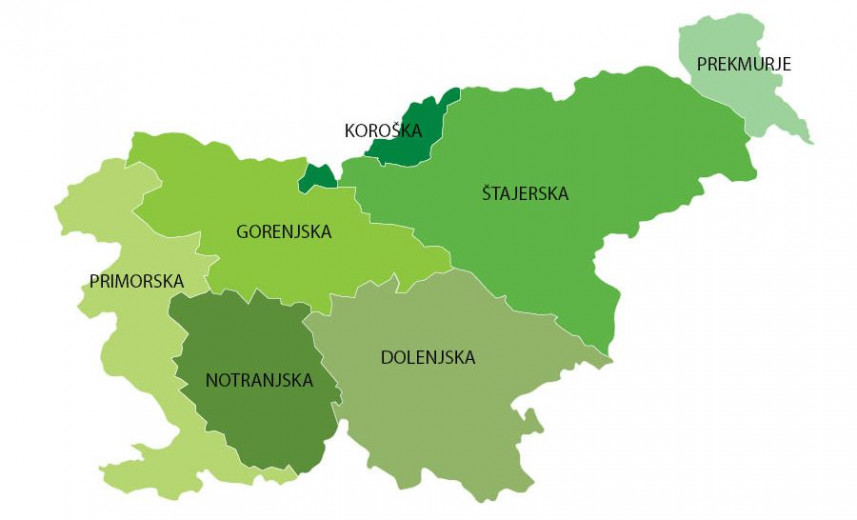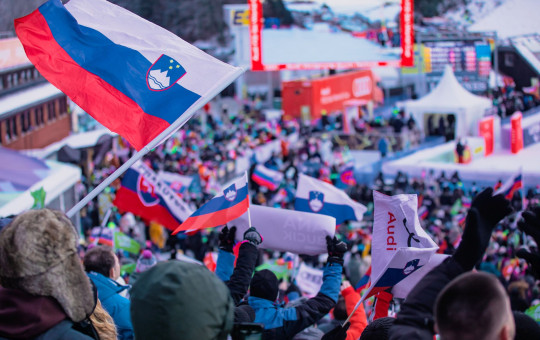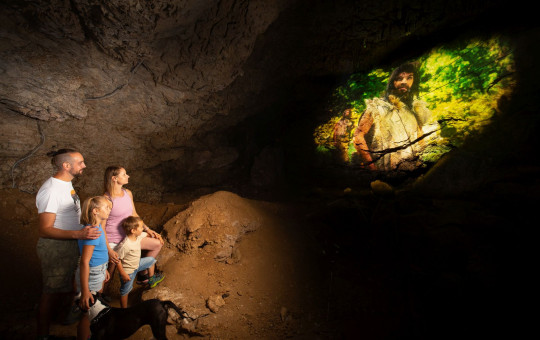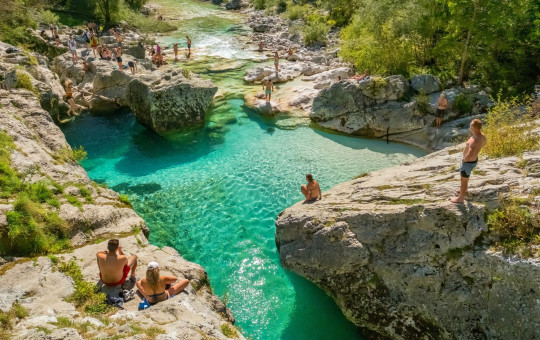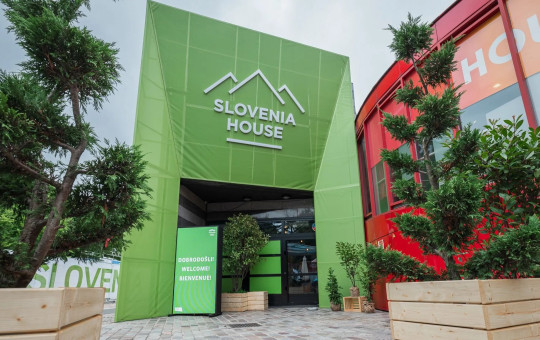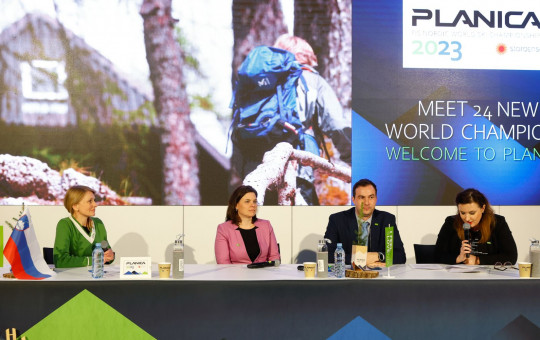Date: 7. October 2019
Time to read: 3 min
Slovenia's location at the crossroads of the Alps, the Mediterranean, the Pannonian Plain and the Dinaric Mountain Range, has through the centuries enabled its regions to develop different economic activities, lifestyles and expressions of cultural creativity.
Some regions are of historical origin (e.g. Gorenjska, Dolenjska, Notranjska, Primorska, Štajerska, Koroška and Prekmurje) while others were created after the Second World War by political decisions (e.g. Pomurje, Posočje and Kozjansko). Among the greatest treasures of these regions are the diversity of dialects of the Slovenian language, different housing and gastronomic traditions, popular entertainment and other aspects of the everyday life of the local population.
Notranjska
Notranjska was arguably the first region to have become more widely known in the world, thanks to the Slovenian nobleman, castle-owner and polymath Janez Vajkard Valvasor (1641-1693), whose comprehensive opus, "The Glory of the Duchy of Carniola", describes the special natural and cultural characteristics of this part of Slovenia.
Valvasor's treatise on the intermittent Lake Cerknica earned him membership of the Royal Society of London in 1687.
Also to Valvasor’s credit is the first mention of the skiing tradition on the Bloke plateau in Notranjska, which puts Slovenia alongside the Scandinavian countries as one of the cradles of European and world skiing.
-
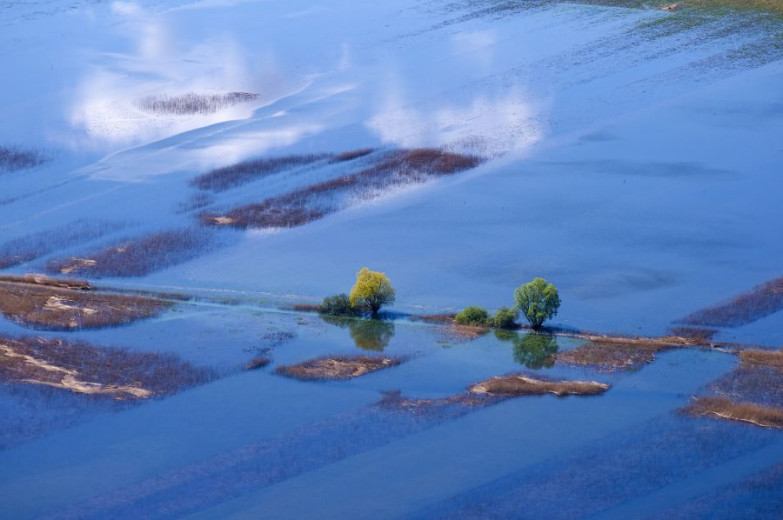 The intermittent Lake Cerknica. Photo: Matevž Lenarčič/www.slovenia.info
The intermittent Lake Cerknica. Photo: Matevž Lenarčič/www.slovenia.info
-
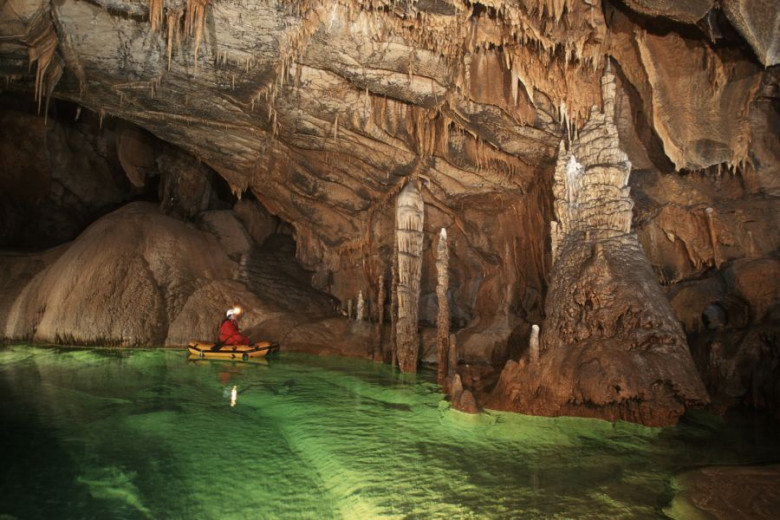 The picturesque Križna Cave with its small lakes and other karst phenomena. Photo: Društvo ljubiteljev Križne jame archives
The picturesque Križna Cave with its small lakes and other karst phenomena. Photo: Društvo ljubiteljev Križne jame archives
-
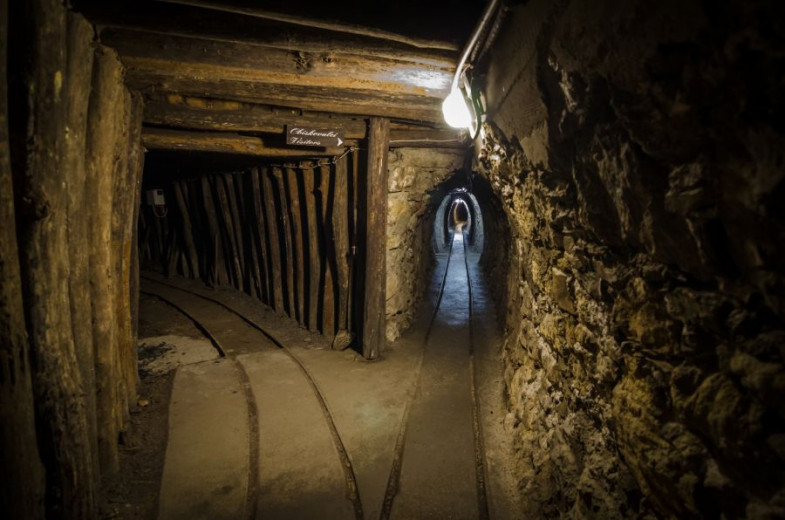 The town of Idrija was also made famous by its mercury mine, now turned into a museum exhibiting many technical inventions and machines. Photo: Marko Šinkovec
The town of Idrija was also made famous by its mercury mine, now turned into a museum exhibiting many technical inventions and machines. Photo: Marko Šinkovec
-
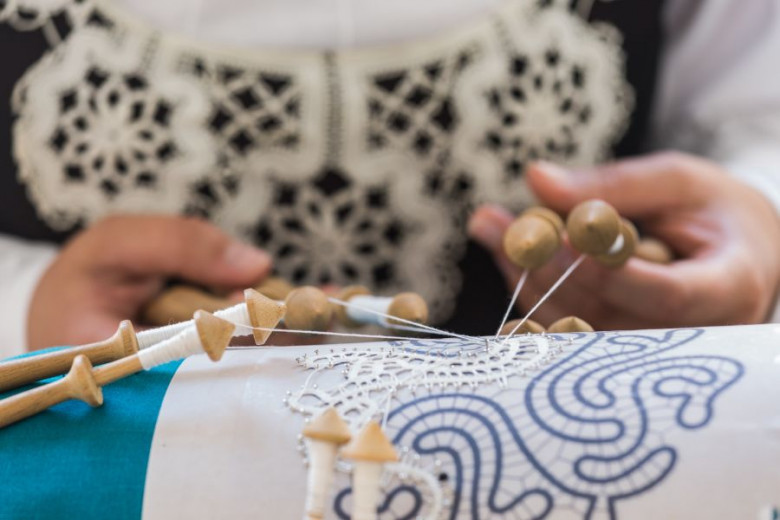 Idrija is notable for its special Idrija-type bobbin lace, one of the finest expressions of Slovenian handicraft traditions. The lace-making school in Idrija was founded in 1876 and is the oldest continually working school of its kind in Europe. Photo: Foto Video Coppo di Marco Coppo/Photo: Matevž Lenarčič/www.slovenia.info
Idrija is notable for its special Idrija-type bobbin lace, one of the finest expressions of Slovenian handicraft traditions. The lace-making school in Idrija was founded in 1876 and is the oldest continually working school of its kind in Europe. Photo: Foto Video Coppo di Marco Coppo/Photo: Matevž Lenarčič/www.slovenia.info
Dolenjska
The countryside of Dolenjska is hilly and varied. Green.
The River Krka is a lifeline and proudly referred to by the locals as the Dolenjska Beauty.
Downstream, the river gently meanders through Novo mesto (the capital of Dolenjska), Otočec and Kostanjevica. Upstream, it flows through the Krka Valley and Suha krajina where it reveals its dynamic karst nature with tuff formations in the riverbed. The valley of the River Krka also boasts many ancient castles, of which the castle at Otočec stands out.
The part of Dolenjska around the towns of Ribnica and Kočevje is home to traditional wooden ware, known locally under the name of suha roba, as well as pottery.
The region known as Bela krajina is isolated from the rest of Slovenia by the Gorjanci hills. It is considered one of the country’s most romantic regions, imbued with southern Pannonian traditions. It is known for its wine-producing slopes, and also for its traditional beautifully decorated Easter eggs called belokranjske pisanice.
-
 Novo mesto is the city on a bend of the Krka River. Photo: Jošt Gantar/www.slovenia.info
Novo mesto is the city on a bend of the Krka River. Photo: Jošt Gantar/www.slovenia.info
-
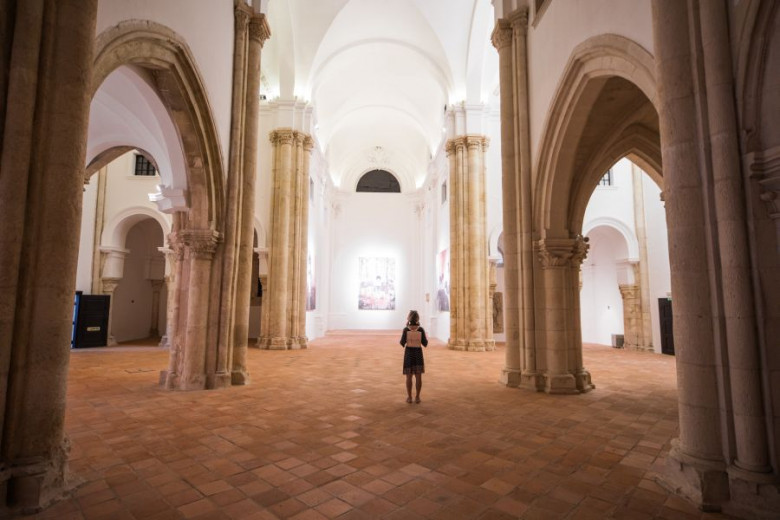 Gallery inside a church. Božidar Jakac Art Museum, Kostanjevica na Krki. Photo: Jošt Gantar/www.slovenia.info
Gallery inside a church. Božidar Jakac Art Museum, Kostanjevica na Krki. Photo: Jošt Gantar/www.slovenia.info
-
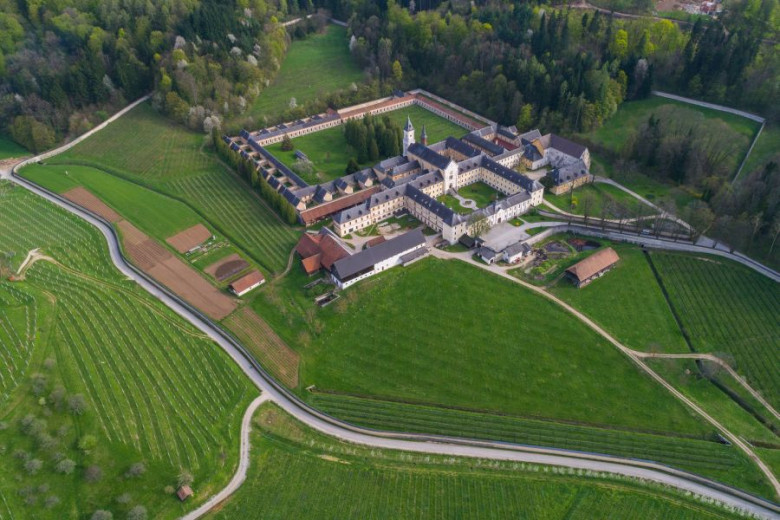 The Pleterje Charterhouse. Dolenjska is famous for three important medieval monasteries: the Cistercian Abbey of Stična, the Pleterje Charterhouse and the remains of a Cistercian Abbey at Kostanjevica which currently serves as an art gallery. Photo: Jošt Gantar/www.slovenia.info
The Pleterje Charterhouse. Dolenjska is famous for three important medieval monasteries: the Cistercian Abbey of Stična, the Pleterje Charterhouse and the remains of a Cistercian Abbey at Kostanjevica which currently serves as an art gallery. Photo: Jošt Gantar/www.slovenia.info
-
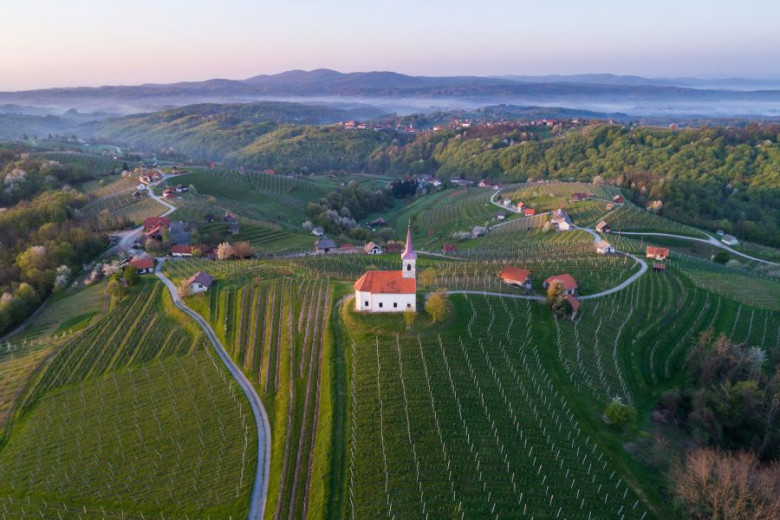 Bela krajina - A beautiful region in the far south of Slovenia. Photo: Jošt Gantar/www.slovenia.info
Bela krajina - A beautiful region in the far south of Slovenia. Photo: Jošt Gantar/www.slovenia.info
-
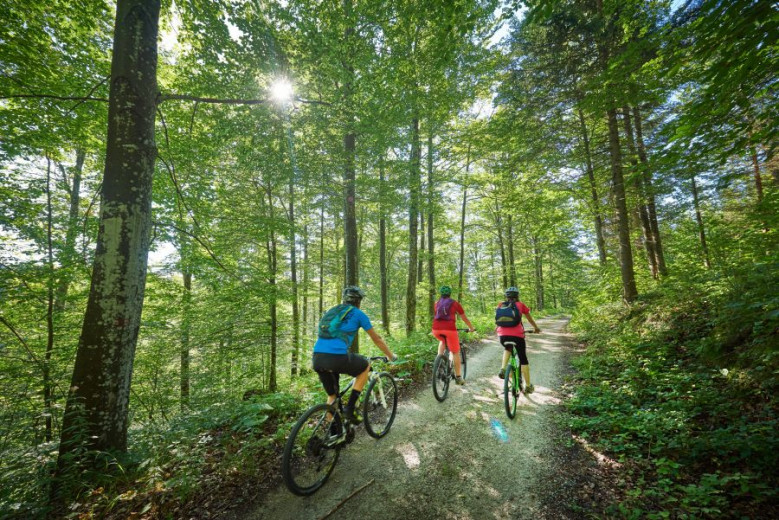 Cycling in Kočevski rog. The Kočevje area is covered by vast forests, the largest primeval woodland in Europe and a protected area since 1888, where many wild animals live, including the brown bear, wolf and lynx. Photo: Tomo Jeseničnik/www.slovenia.info
Cycling in Kočevski rog. The Kočevje area is covered by vast forests, the largest primeval woodland in Europe and a protected area since 1888, where many wild animals live, including the brown bear, wolf and lynx. Photo: Tomo Jeseničnik/www.slovenia.info
Štajerska
Maribor is the second largest city in Slovenia and the capital of the Štajerska region famed for its vineyards. The city lies between wine-producing hills and the forested slopes of the Pohorje. The symbiosis of the city and the vine is affirmed by the 400-year old vine of the local žametovka variety, which grows in the Lent Quarter of the city on the left bank of the River Drava. It is the oldest vine in the world.
Celje, once the seat of the Counts of Cilli, an influential aristocratic dynasty from the 15th century, is today one of Slovenia’s most dynamic and rapidly developing towns.
The town's glorious past is reflected in the ruins of the mighty castle, once the largest in Slovenia. Celje is not far from the Savinja and Šaleška valleys. The former is known for hop cultivation. The Štajerska and Dolenjska regions meet in Posavje and Bizeljsko where you can relax in one of the many thermal spas and modern wellness centres.
The unspoilt landscape of Kozjansko offers quality produce, such as old apple varieties grown in orchards surrounded by meadowlands, characteristic sights in the Kozjansko Regional Park.
-
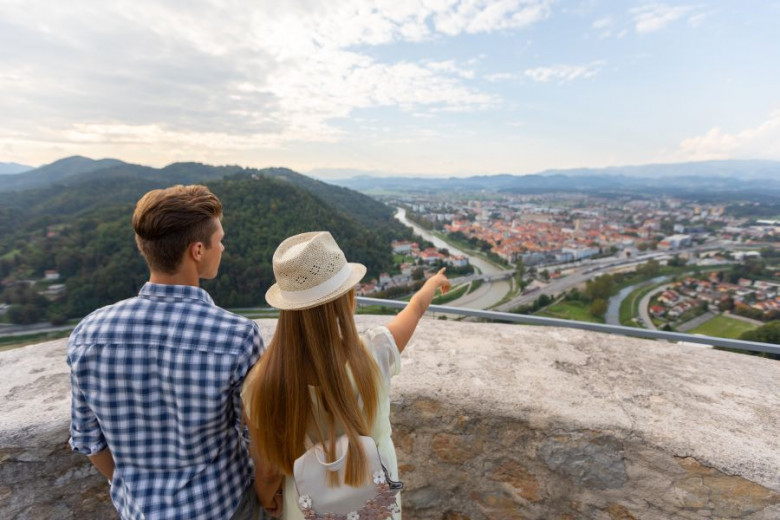 The view over Celje from the Old Castle. Photo: Dražen Stader, Produkcija Studio
The view over Celje from the Old Castle. Photo: Dražen Stader, Produkcija Studio
-
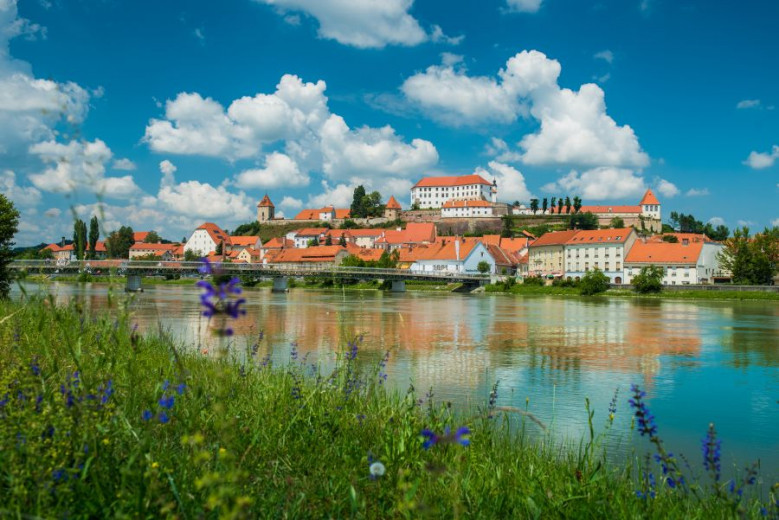 Ptuj is one of Slovenia’s oldest towns. The most prominent features of the town are its medieval castle and the oldest wine cellar in Slovenia. Photo: Mankica Kranjec/Ptuj Tourist Board
Ptuj is one of Slovenia’s oldest towns. The most prominent features of the town are its medieval castle and the oldest wine cellar in Slovenia. Photo: Mankica Kranjec/Ptuj Tourist Board
-
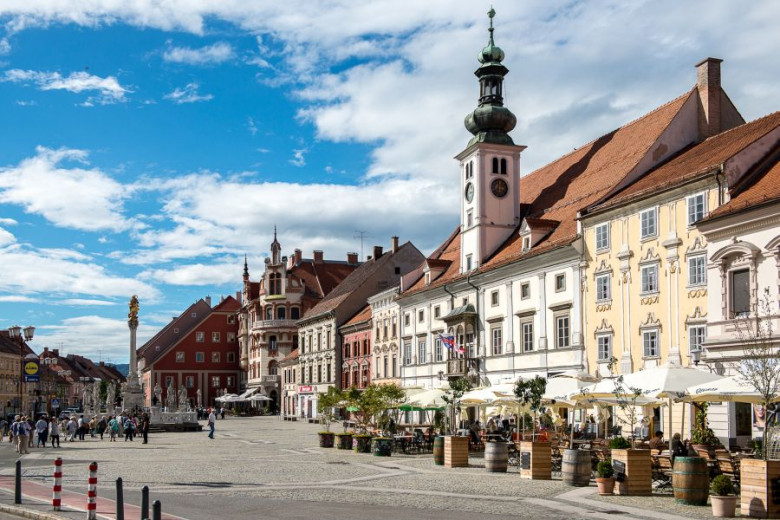 Maribor is the capital of the Štajerska region. Photo: Nikola Jurišič
Maribor is the capital of the Štajerska region. Photo: Nikola Jurišič
-
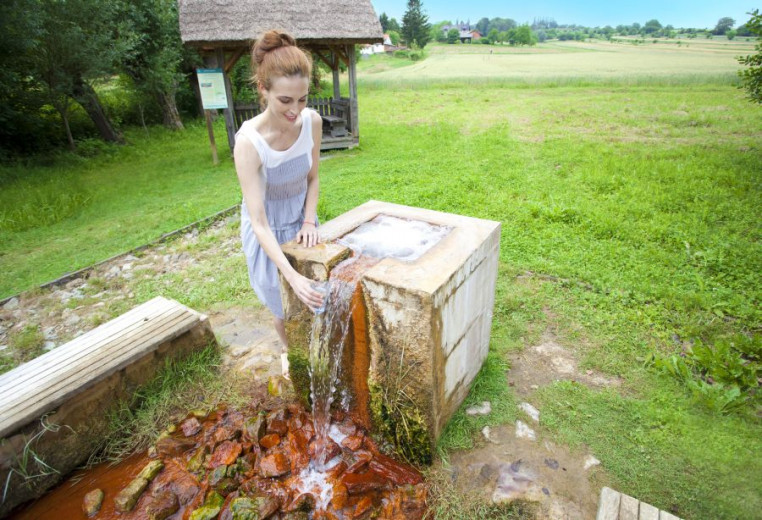 Radenska mineral water spring. Radenci is an important local centre due to its springs of Radenska mineral water and health and spa tourism. Photo: Nea Culpa d. o. o.
Radenska mineral water spring. Radenci is an important local centre due to its springs of Radenska mineral water and health and spa tourism. Photo: Nea Culpa d. o. o.
-
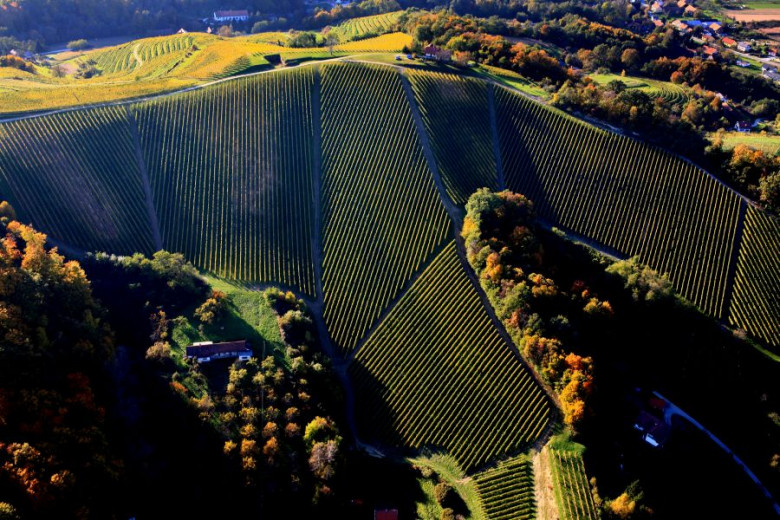 Jeruzalem in Prlekija. The wine-producing districts of Slovenske gorice and Prlekija are a picturesque land of rolling hills and plains between the rivers Mura and Drava. Photo:Ciril Ambrož
Jeruzalem in Prlekija. The wine-producing districts of Slovenske gorice and Prlekija are a picturesque land of rolling hills and plains between the rivers Mura and Drava. Photo:Ciril Ambrož
Prekmurje
Flat land covered by cornfields stretches from the left bank of the River Mura to the Austrian and Hungarian borders.
It is characterised by long roadside villages visited by storks, which return there each year.
Prekmurje used to be an important centre for pottery, one of the most ancient handicrafts in Slovenia. The trademark of the village of Filovci is black ceramics – water jugs called "pütra", wine jugs, bowls for sour milk and other pottery products. Farmers in Prekmurje used to carry water in "pütras" when they went to work in the fields because it remained cool despite the summer heat.
-
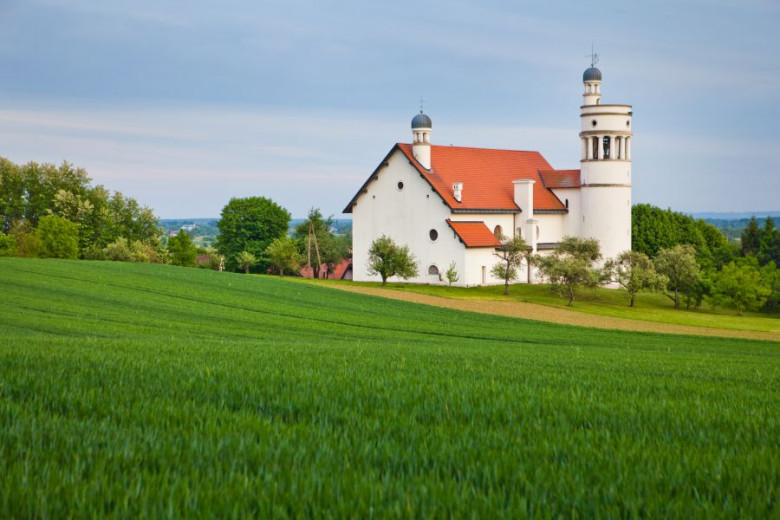 In the village of Bogojina, a famous church was built between 1925 and 1927. It was designed by the architect Jože Plečnik, who decorated its interior with local pottery items. Photo: Jošt Gantar/www.slovenia.info
In the village of Bogojina, a famous church was built between 1925 and 1927. It was designed by the architect Jože Plečnik, who decorated its interior with local pottery items. Photo: Jošt Gantar/www.slovenia.info
-
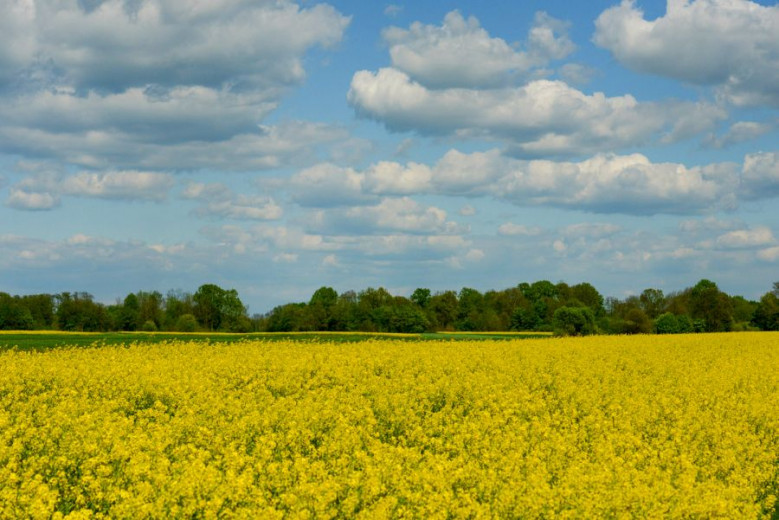 Fields in Prekmurje. Photo: Mankica Kranjec
Fields in Prekmurje. Photo: Mankica Kranjec
-
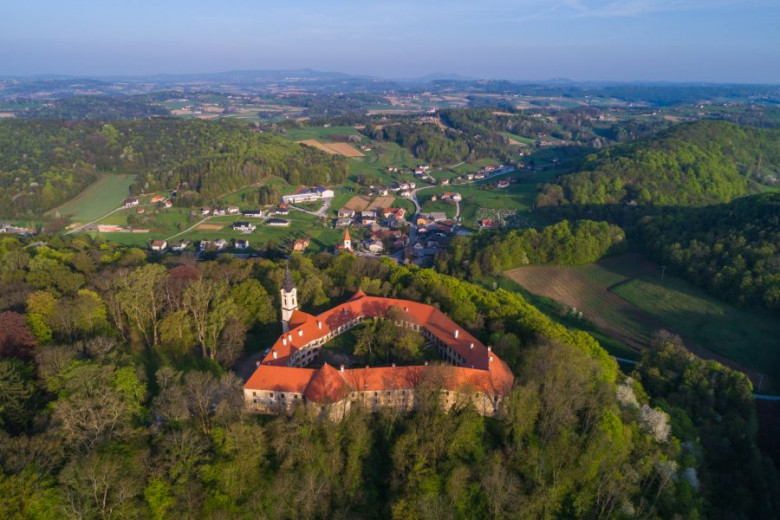 Castle Grad at Nature Park Goričko. Photo: Jošt Gantar/www.slovenia.info
Castle Grad at Nature Park Goričko. Photo: Jošt Gantar/www.slovenia.info
-
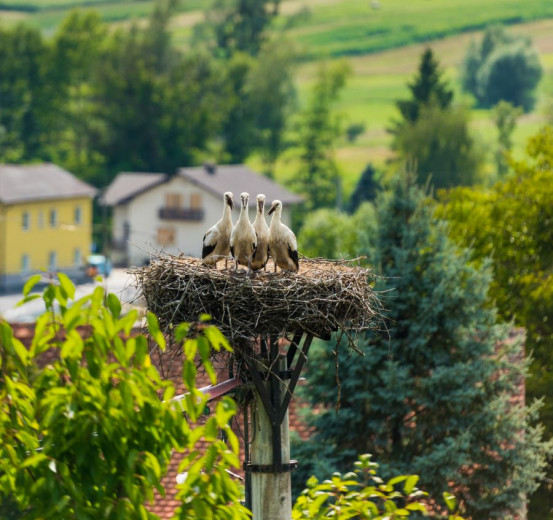 Prekmurje stork. Photo: Mankica Kranjec
Prekmurje stork. Photo: Mankica Kranjec
-
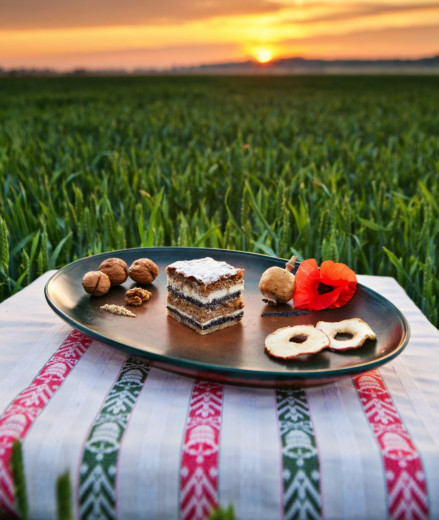 Prekmurje culinary. Photo: Jošt Gantar/www.slovenia.info
Prekmurje culinary. Photo: Jošt Gantar/www.slovenia.info
Koroška
Though it is one of the smallest regions, Koroška is considered the cradle of the Slovenian nation. Following the plebiscite in 1920 the larger part of Koroška (Carinthia) came under Austrian rule. The Slovenian region of Koroška now encompasses three valleys, the Mežica, the Drava and the Mislinja, which are surrounded by three mountain ranges, the Pohorje, the Karavanke and the Savinja Alps.
The unspoilt nature and forests will satisfy the curiosity of any explorer. The magic of Koroška can be found in its precious details created by man and nature.
Koroška is associated with charcoal burning, timber rafting and ironworks. The unique creativity of its inhabitants is best observed in folk paintings, woodcarving crafts and special painted beehive panels.
-
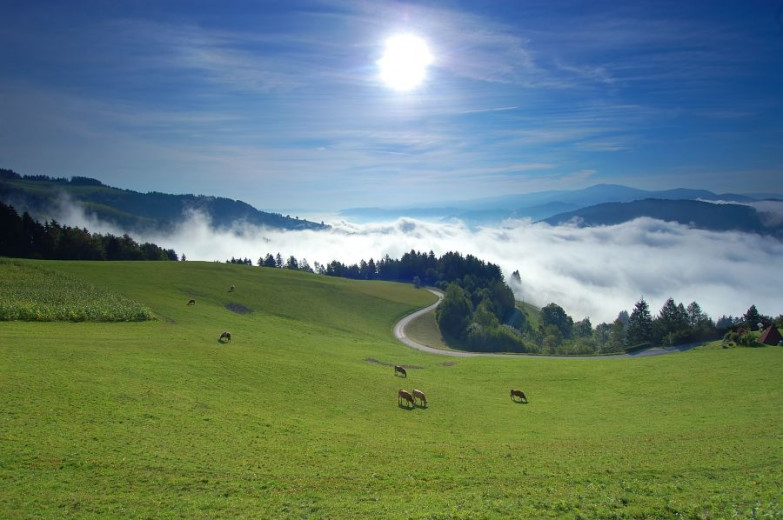 Koroška at Ojstrica. Photo: Tomo Jeseničnik/www.slovenia.info
Koroška at Ojstrica. Photo: Tomo Jeseničnik/www.slovenia.info
-
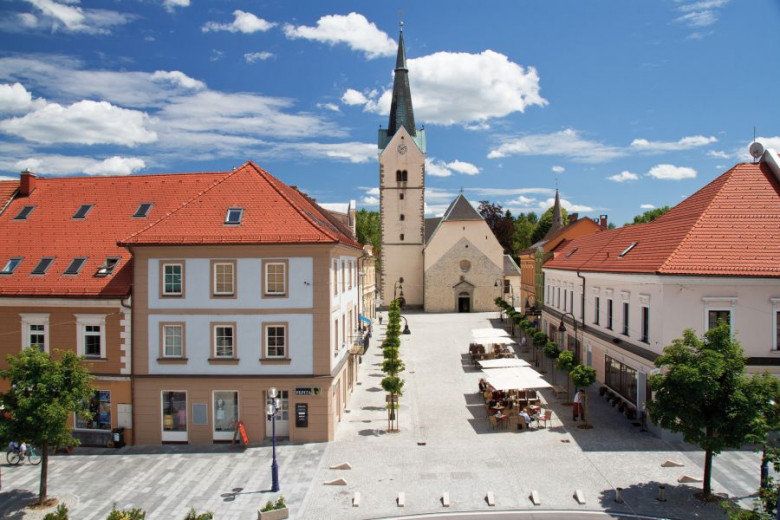 Slovenj Gradec is an important business and cultural centre of the region famed for its fine art galleries and biennial exhibitions of handicrafts. It was also proclaimed a Peace Messenger City by the United Nations. Photo: Tomo Jeseničnik/www.slovenia.info
Slovenj Gradec is an important business and cultural centre of the region famed for its fine art galleries and biennial exhibitions of handicrafts. It was also proclaimed a Peace Messenger City by the United Nations. Photo: Tomo Jeseničnik/www.slovenia.info
-
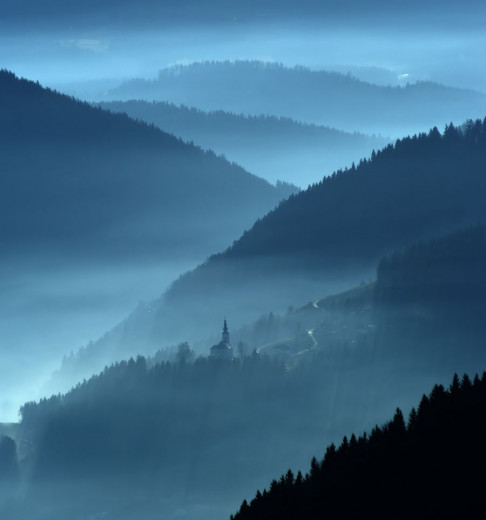 Mežica valley. Koroška is rich in forests – dark green spruce forests with an increasing number of larches at higher elevations. It is also a habitat of capercailles, an endangered bird species. Photo: Tomo Jeseničnik/RRA Koroška d. o. o. archives
Mežica valley. Koroška is rich in forests – dark green spruce forests with an increasing number of larches at higher elevations. It is also a habitat of capercailles, an endangered bird species. Photo: Tomo Jeseničnik/RRA Koroška d. o. o. archives
-
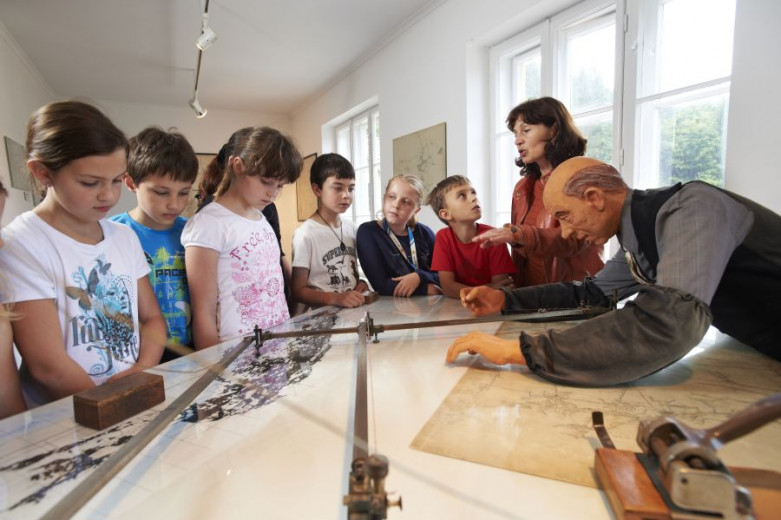 In the Mežica Valley lies the well-known Ravenska železarna ironworks. At Mežica, the disused lead mine has been preserved and converted into an exceptional museum, which is a cultural attraction popular with visitors. Photo: Tomo Jeseničnik/Podzemlje Pece d. o. o. archives
In the Mežica Valley lies the well-known Ravenska železarna ironworks. At Mežica, the disused lead mine has been preserved and converted into an exceptional museum, which is a cultural attraction popular with visitors. Photo: Tomo Jeseničnik/Podzemlje Pece d. o. o. archives
-
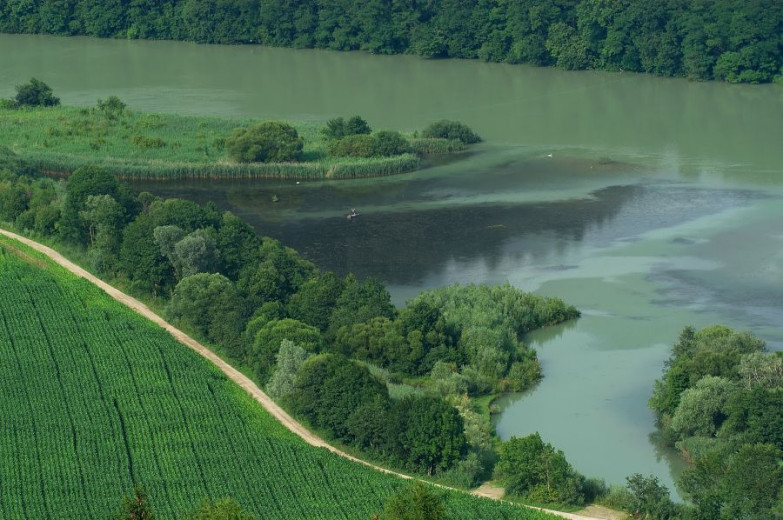 River Drava. Photo: Tomo Jeseničnik/RRA Koroška d. o. o. archives
River Drava. Photo: Tomo Jeseničnik/RRA Koroška d. o. o. archives
Gorenjska
The north-western part of Slovenia is Alpine and is known as Gorenjska.
For centuries, it has been the most developed Slovenian region.
This is best seen in the historical town centres of Škofja Loka, Radovljica, Kranj, Kamnik and Tržič where ironmaking (smelting and wrought-iron products) has been a decisive factor in development. The ironworks in the town of Jesenice, the cradle of Slovenian ice hockey, date from more recent times.
Gorenjska is synonymous with winter sports. Begunje is the headquarters of the leading ski manufacturer Elan, which revolutionised skiing with its carving innovation.
Numerous ski resorts and the world-famous ski-jump at Planica are all essential elements of the region’s winter image.
Bled, Bohinj and Kranjska Gora have always been the most popular Slovenian tourist destinations.
-
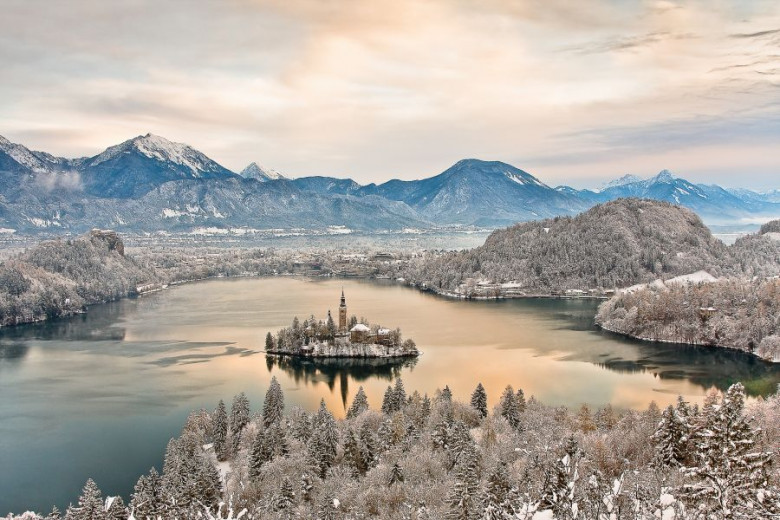 Lake Bled with its picturesque island is a unique attraction. Photo: Franci Ferjan/www.slovenia.info
Lake Bled with its picturesque island is a unique attraction. Photo: Franci Ferjan/www.slovenia.info
-
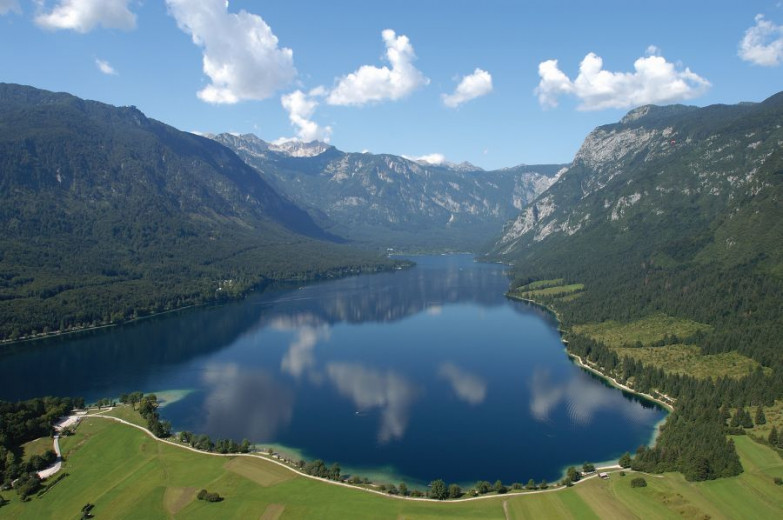 Lake Bohinj is the largest Slovenian natural lake. Photo: Mitja Sodja
Lake Bohinj is the largest Slovenian natural lake. Photo: Mitja Sodja
-
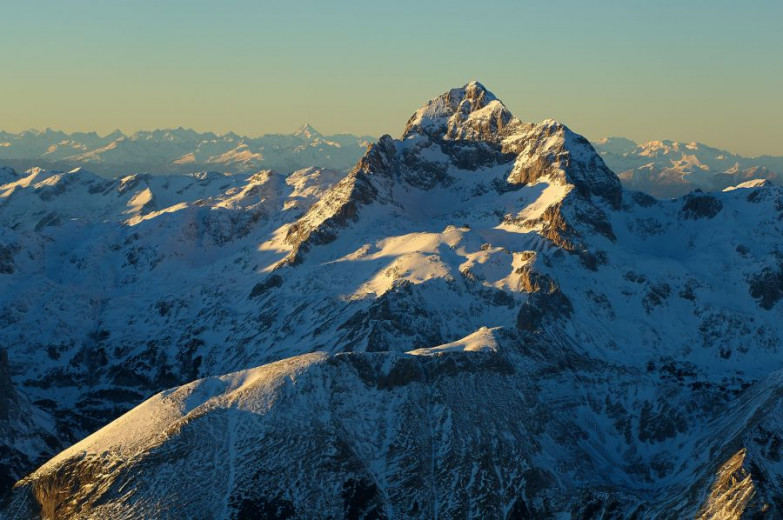 Mt. Triglav (2864 m) is the highest Slovenian mountain. Photo: Matevž Lenarčič/www.slovenia.info
Mt. Triglav (2864 m) is the highest Slovenian mountain. Photo: Matevž Lenarčič/www.slovenia.info
-
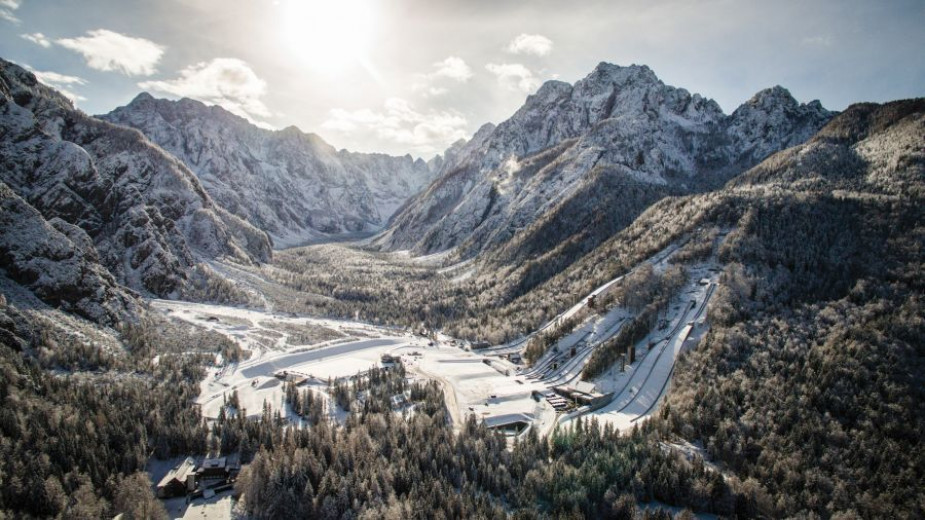 Planica is a cradle of ski jumping that is visited every year by the very best athletes. Photo: Planica Nordic Centre archives
Planica is a cradle of ski jumping that is visited every year by the very best athletes. Photo: Planica Nordic Centre archives
-
 Upper Jezersko. Photo: Tomo Jeseničnik/www.slovenia.info
Upper Jezersko. Photo: Tomo Jeseničnik/www.slovenia.info
Primorska
Primorska is also a historic region in the west of Slovenia. Within it, the Posočje area stretches from the shores of the Adriatic to the western borders of the Triglav National Park, all the way to the source of the River Soča. The site bears witness to the fierce fighting on the Isonzo Front during the First World War, which is documented at the Kobarid Museum. The battles in Posočje inspired Ernest Hemingway to write the novel A Farewell to Arms.
The River Soča is a true emerald-coloured gem in the heart of the mountains and a paradise for adventure-seeking visitors: white water kayaking, canoeing and rafting.
On the right bank of the Soča, near Nova Gorica, lies a wine-producing area known as Goriška Brda.
Slovenian Istria is most strongly associated with the sea. This is a very picturesque and varied landscape, characterised by vineyards, olive trees and Mediterranean fruit trees. On the coast, sea salt and flower of salt are harvested; the sea has fish in abundance; truffles can be found in the woods and meadows.
-
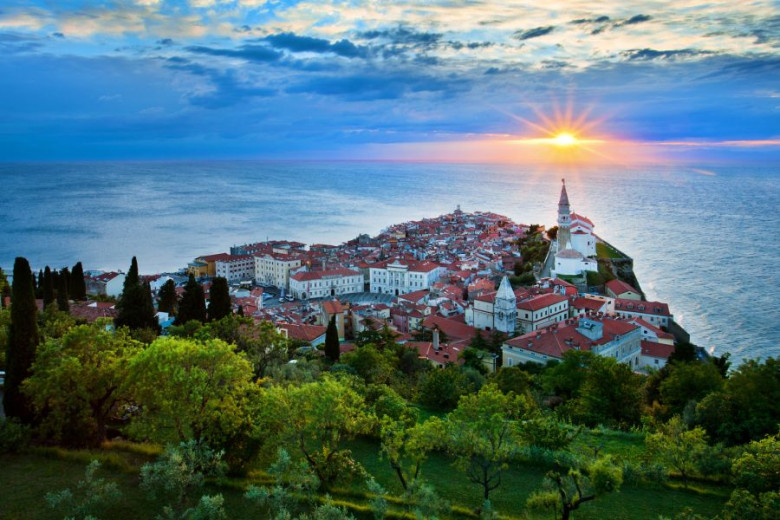 Piran. Besides scenic stone villages, there are three famous ancient coastal towns in the region, Koper, Izola and Piran, and the tourist resort of Portorož. Photo: Jošt Gantar/www.slovenia.info
Piran. Besides scenic stone villages, there are three famous ancient coastal towns in the region, Koper, Izola and Piran, and the tourist resort of Portorož. Photo: Jošt Gantar/www.slovenia.info
-
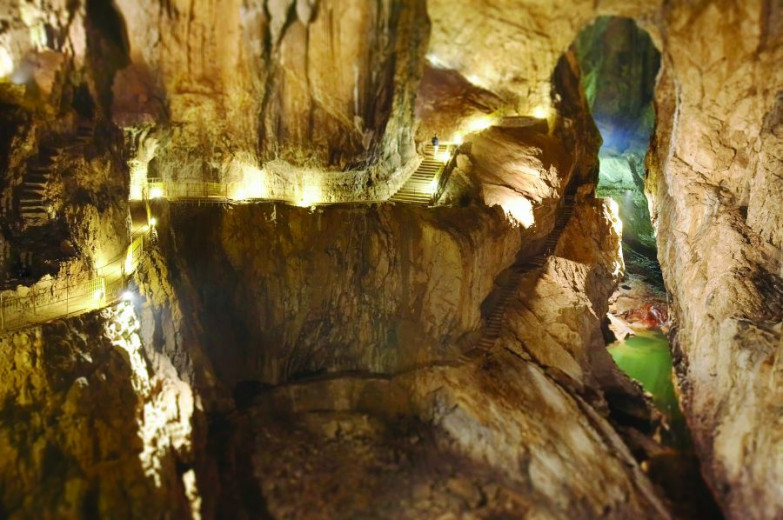 The Škocjan Caves are a registered UNESCO World Heritage Site. Photo: Jakše Jeršič/www.slovenia.info
The Škocjan Caves are a registered UNESCO World Heritage Site. Photo: Jakše Jeršič/www.slovenia.info
-
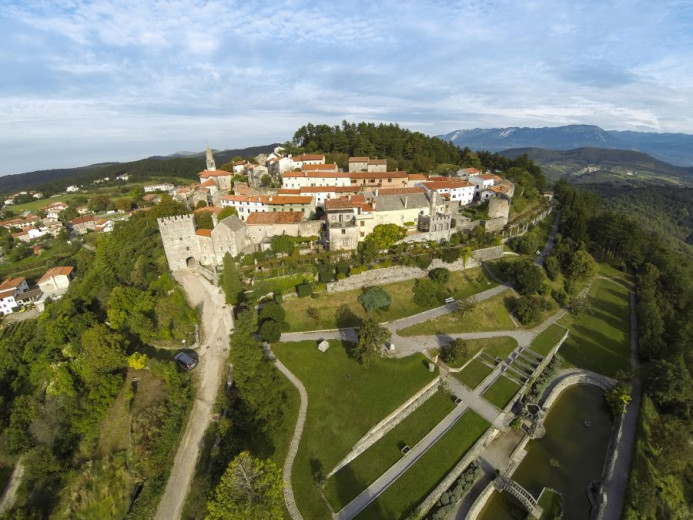 Typical karst village Štanjel. Photo: Dejan Šuc/Komen Municipality archives
Typical karst village Štanjel. Photo: Dejan Šuc/Komen Municipality archives
-
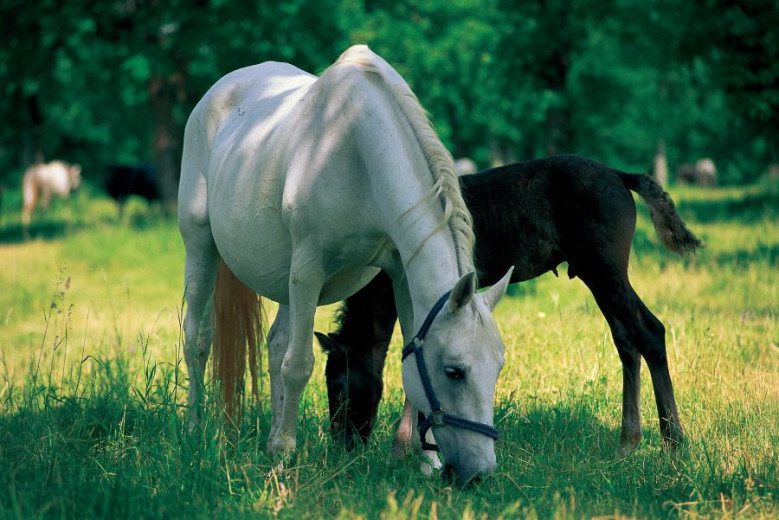 The world-famous white Lipizzaner horses were named after the village of Lipica in Kras. For some these are the best riding horses in the world. Photo: B. Kladnik/www.slovenia.info
The world-famous white Lipizzaner horses were named after the village of Lipica in Kras. For some these are the best riding horses in the world. Photo: B. Kladnik/www.slovenia.info
-
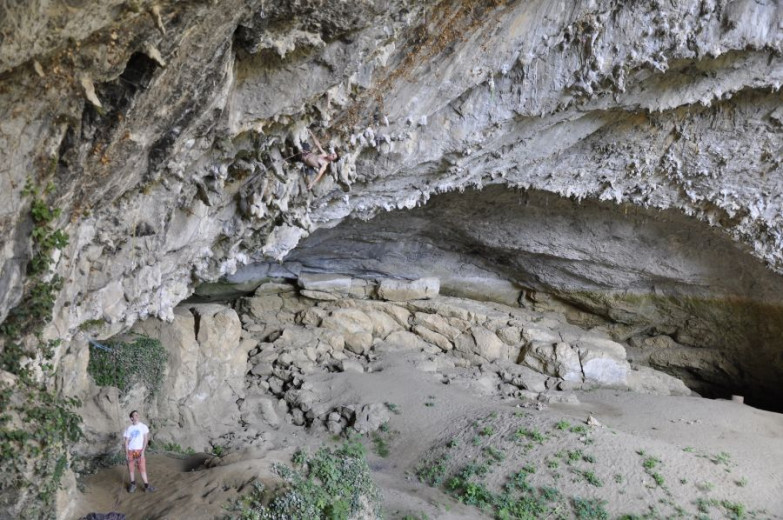 Kras gave its name to karstology, the science investigating karst phenomena. Seemingly uninteresting on the surface, the karst underground world is extraordinary and mysterious. Photo: Hiking at Slovenian Karst. Photo: Jurij Ravnik
Kras gave its name to karstology, the science investigating karst phenomena. Seemingly uninteresting on the surface, the karst underground world is extraordinary and mysterious. Photo: Hiking at Slovenian Karst. Photo: Jurij Ravnik

